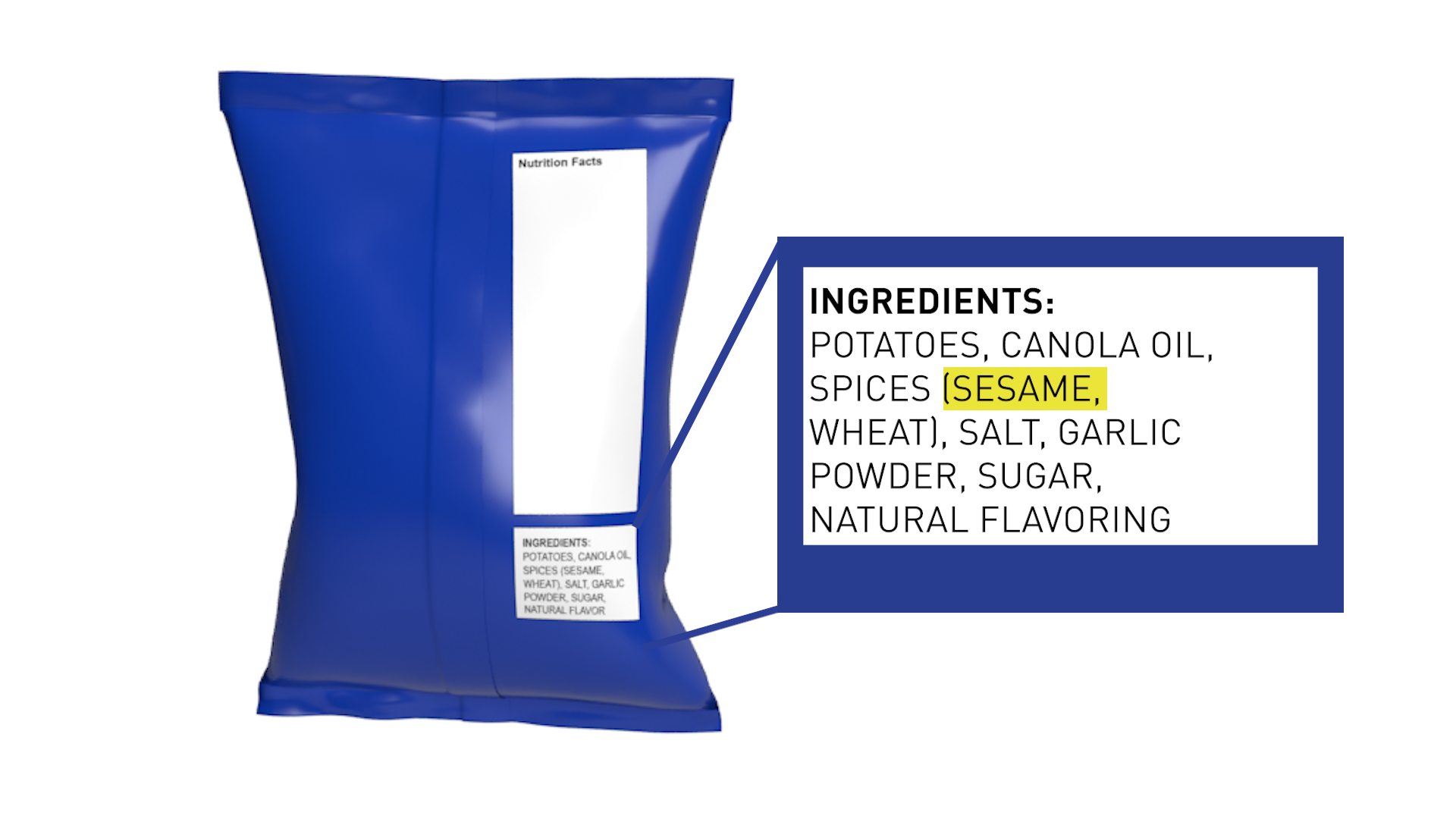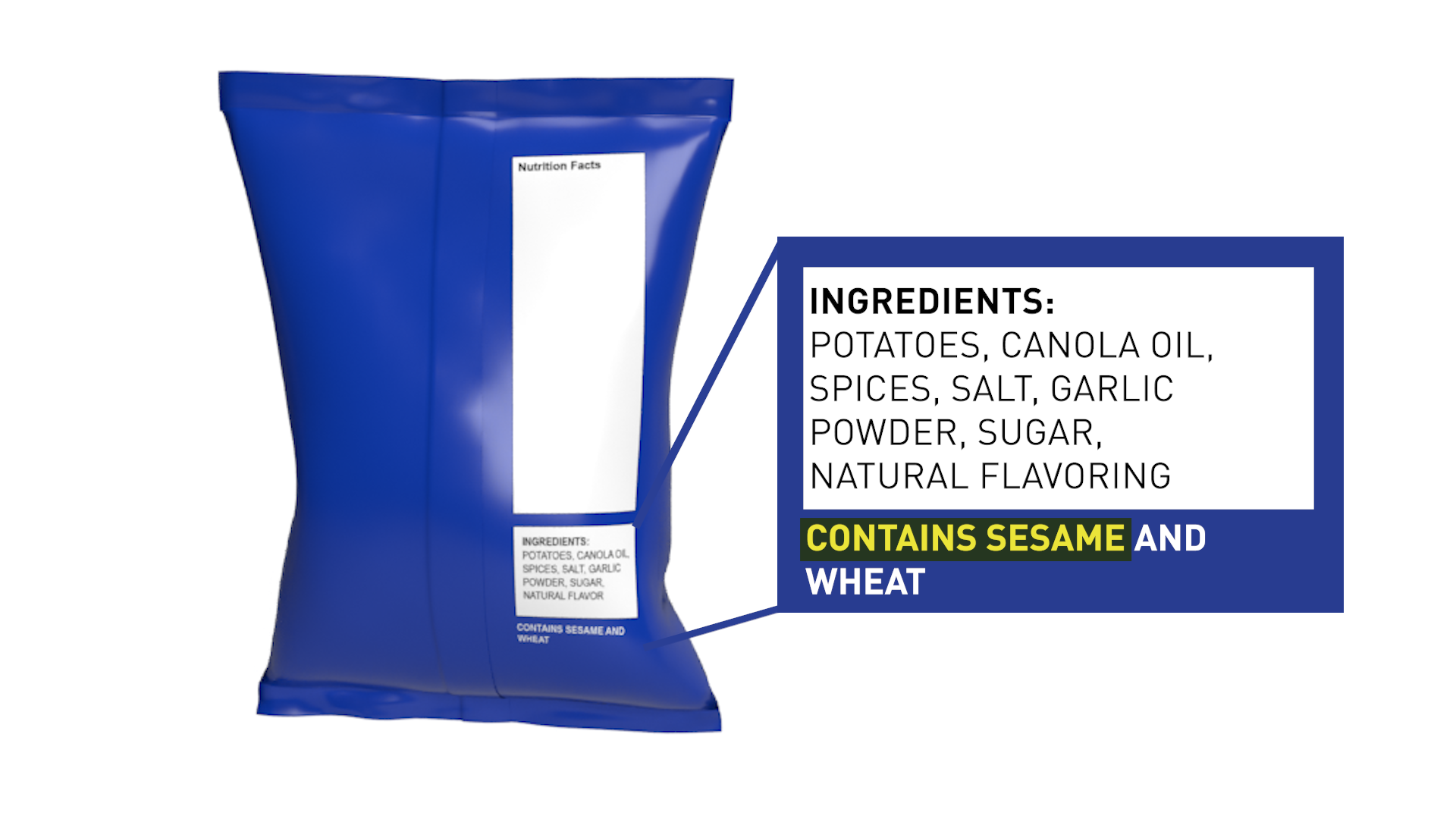Allergic to Sesame? Food Labels Now Must List Sesame as an Allergen
Sesame allergen labeling on food packages is required as of January 1, 2023. But you may not see sesame listed as an allergen on some products right away.
If you or someone in your household is allergic to sesame, an important change is taking place to help you quickly identify foods that contain sesame. As of January 1, 2023, sesame is required to be labeled as an allergen on packaged foods, including dietary supplements.
Sesame joins eight other foods already declared as major food allergens by federal law. The nine major food allergens are:
- milk
- eggs
- fish, such as bass, flounder, cod
- Crustacean shellfish, such as crab, lobster, shrimp
- tree nuts, such as almonds, walnuts, pecans
- peanuts
- wheat
- soybeans
- sesame
Be Careful During the Sesame Labeling Transition Period
Even though the requirement that sesame be listed on the label as an allergen is in effect as of January 1, 2023, you still may find food products for sale that don’t list sesame as an allergen on the label.
The law establishing this sesame labeling does not require food products that were already on their way to the store or in stock before 2023 to list sesame as an allergen on the label. Therefore, these food products do not need to be removed from the marketplace or relabeled to declare sesame as an allergen.
Because some packaged foods can have a long shelf life, it’s hard to say when pre-2023 stock will be replaced with food products carrying the required labels. So, proceed with caution during this transition period.
Also keep in mind a food product’s ingredients can be changed at any time, so it’s a good idea to check the label every time you buy the food product – even if you have eaten it before and didn’t have an allergic reaction.
If you want to know more about the use of sesame in a food product, the U.S. Food and Drug Administration, which is responsible for enforcing the labeling requirements, recommends you contact the manufacturer or distributor identified on the food product label.
Examples of New Sesame Labeling
Here is what the new sesame labeling might look like.
The name of the food source of a major food allergen must appear either:
In parentheses following the name of the ingredient.
Examples: “lecithin (soy),” “flour (wheat), natural flavor (sesame),” and “spices (sesame)”
— OR —
Immediately after or next to the list of ingredients in a “Contains” statement.
Example: “Contains sesame.”
Sesame has always been required to be listed in the ingredient statement if it was an added ingredient, with a few exceptions. That’s true for any added ingredient. Now that sesame is a major food allergen, the FDA expects that it be specifically listed as sesame on the label if it’s part of another ingredient, like “natural flavor,” or “spice mix.”
Additionally, if a food package has a “Contains” statement and has sesame as an ingredient, sesame will now have to be included in that “Contains” statement. As a result, consumers will have more information about which products contain sesame as an ingredient.
The sesame labeling requirements apply to packaged foods. Allergen labeling requirements for foods that aren’t packaged may vary, like bagels in a grocery bin or bakery goods displayed on trays. If you’re concerned about those products, you may want to ask store personnel for food allergen information.
Why Did Sesame Become a Major Food Allergen?
Sesame became the ninth major food allergen through the Food Allergy Safety, Treatment, Education, and Research (FASTER) Act, a federal law passed in 2021. The other eight major food allergens were defined through a federal law passed in 2004.
While many kinds of foods can cause allergies, the federal laws focus on the most common ones and require that food labels identify the food source of a major food allergen using its common or usual name on the label.
The nine major food allergens cause the majority of serious food allergic reactions in the U.S.
Additional Resources
- Food Allergies, FDA webpage
- Have Food Allergies? Read the Label, FDA Consumer Update
- Food Allergy, NIH MedlinePlus


